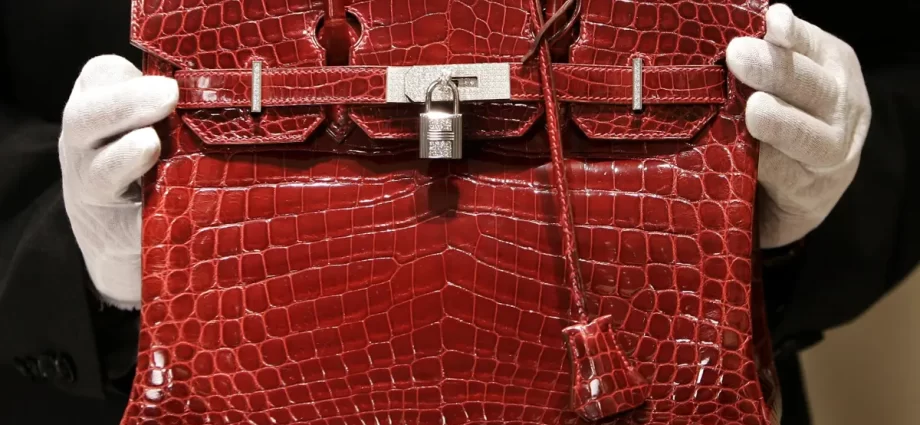I vividly recall my initial encounter with the Birkin bag, an iconic fashion emblem, through the captivating world of “Sex and the City.” The unforgettable moment when Samantha, with her unwavering determination and unapologetic style, triumphantly secures her coveted Birkin bag after enduring a tantalizing waitlist, left an indelible impression on me. Little did I know then, that beyond its allure of luxury and exclusivity, lay a haunting reality of animal exploitation and cruelty within the fashion industry. This revelation prompted me to delve deeper into the ethical and environmental implications of luxury fashion, igniting a passion for conscious consumerism and ethical fashion choices.
The Haunting Reality Behind the Luxury of Birkin Bags: Unveiling the Cruelty
The Birkin bag, a coveted symbol of luxury and status, often adorning the arms of celebrities and fashion enthusiasts, comes with a steep price tag that extends far beyond its exorbitant cost. While these iconic bags are celebrated for their exquisite craftsmanship and opulence, the dark truth of their production involves the exploitation and cruelty inflicted upon thousands of crocodiles and alligators to meet the demand for exotic skins.



The Exorbitant Price Tag and the Allure of Luxury
With a price tag that can soar into tens of thousands of dollars, the Birkin bag is more than just a fashion accessory; it represents a statement of opulence and exclusivity. Worn by influential figures such as Kim Kardashian, the Birkin bag has become synonymous with wealth and luxury, embodying the pinnacle of sartorial sophistication. However, the allure of luxury and the prestige associated with these bags often overshadow the haunting reality of animal exploitation and suffering.
The Cost of Cruelty: Thousands of Lives for a Fashion Statement
Behind the scenes, the production of Birkin bags and other high-end fashion items involves the brutal slaughter of thousands of crocodiles and alligators. Reports from People for the Ethical Treatment of Animals (PETA) have uncovered the inhumane treatment of these creatures, ranging from overcrowded living conditions to barbaric slaughter methods. The haunting images and videos depict the harrowing reality of these animals crammed into concrete pits and filthy pools, deprived of their natural behaviours and ultimately slaughtered for their skins.
The Disturbing Truth Exposed
PETA’s investigations have shed light on the appalling conditions in which these animals are raised and killed for the sake of luxury goods. The graphic evidence reveals the crude and inhumane practices employed in the pursuit of exotic skins, from workers crudely hacking into the necks of live alligators to attempts to scramble their brains with metal rods. The sheer scale of this exploitation is staggering, with over 100,000 crocodiles confined to concrete pens at certain farms, with the skins of these animals ultimately finding their way into high-end fashion items, including Birkin bags that command astronomical prices.
Despite many protests against this over the years Hermes revenue still continues to increase.

The Sacred Symbolism of Crocodiles
In West Africa, locals have revered crocodiles for centuries, recognizing their significance in the ecosystem. These formidable creatures are not merely feared predators; they are also revered for their symbolic representation of power, strength, and resilience. In many spiritual beliefs, crocodiles are considered among the oldest creatures on Earth, with deep-rooted ties to traditional beliefs.
The Fashion Industry’s Disregard for Spiritual and Environmental Significance
Despite the spiritual and symbolic significance attached to crocodiles, the fashion industry often sees them as nothing more than a commodity for leather production. The harrowing reality is that approximately 70,000 crocodiles are factory-farmed annually to meet the demand for luxury goods, such as the Hermes Birkin bag.
The Alarming Truth Behind Crocodile Leather Production

The Anticapitalist Book of Fashion sheds light on the disturbing practices within the crocodile leather industry. Once these majestic creatures have grown to a size suitable for European standards (typically around 3 years old), they are brutally slaughtered, despite having the potential to live for up to 70 years. The sheer scale of this exploitation is staggering, with Hermes alone using between three and four crocodiles to create a single handbag, as highlighted by Tansy E. Hoskins.
A Call for Conscious Consumerism and Ethical Accountability
As consumers, it’s crucial to acknowledge the ethical implications of our fashion choices. The allure of luxury should not come at the cost of untold suffering and exploitation. By demanding ethical accountability from luxury fashion houses and embracing sustainable, cruelty-free alternatives, we can collectively challenge the status quo and advocate for a more compassionate and ethical fashion industry.
Casting a Light on Conscious Luxury

The wearers of Birkin bags and other luxury items often seek to make a statement of wealth and sophistication. However, it’s essential to consider the ethical and moral implications of such purchases. By choosing conscious luxury, individuals can align their fashion choices with their values, supporting brands that uphold ethical and sustainable practices, and advocating for a fashion industry that respects all living beings.

